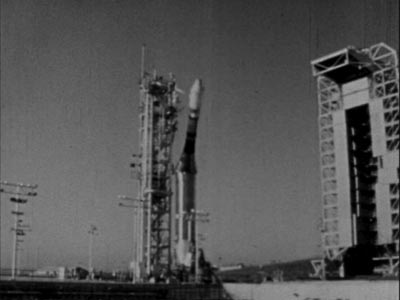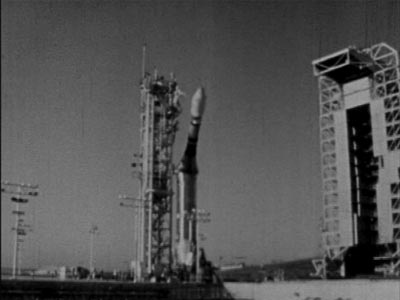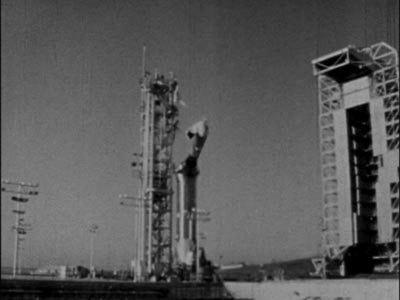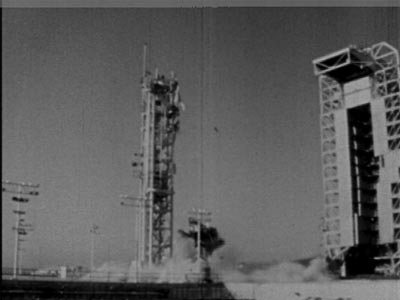|
|
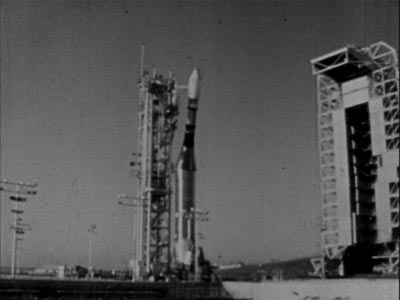 The beginning of an ignominious end for the Atlas Agena D. |
Not a bang, but a whimper
by Dwayne A. Day
Monday, March 16, 2009
When guys who launch rockets have a bad day it usually means a rocket blowing itself to smithereens—rockets are, after all, tubes filled with high explosives and a hole at one end. If they’re lucky, the debris falls into the ocean. When they’re really lucky, they get enough telemetry, and maybe even some wreckage, to show them what happened with the rocket. How the accident investigators are able to piece together the evidence and determine a cause is a largely untold story. Engineering CSI.
But sometimes rockets go out not with a bang, but a whimper. On rare occasions they fail in unspectacular ways, never even getting off the pad. Nobody really keeps track of these events, but over five decades there have been numerous incidents where something has gone wrong with a rocket—before the fire is lit—and the vehicle is written off as a total loss, or a near-total loss. This is the story of one of those cases, a story that remained largely a mystery until a few years ago. Next week we’ll discuss another case, one that was less spectacular, but far more important.
On May 11, 1963, an Atlas Agena D rocket sat on its launch pad at Vandenberg Air Force Base on California’s beautiful central coast. This was a new type of rocket that had not flown from Vandenberg before. The rocket was at the pad for various tests and on this day was being filled with fuel.
The Atlas was a unique rocket because it obtained its structural strength from pressurization. Think of a full soda can. Set it on the ground and you can probably stand on it. Empty it out, however, and it will collapse under your weight. And that’s what happened on this day.
During fueling, a gas bubble developed in the propellant fill and drain system for the rocket. This created a hydraulic ram effect that shook loose the connection inside the vehicle where liquid oxygen flowed into the Atlas. The launch pad crew, hunkered down in the blockhouse, drained all of the liquid oxygen in the upper tank. But with the Agena D upper stage on top of it, there was pressure from above on the tank. The tank buckled and the Agena fell over, pivoting down and hitting the ground.
What must have scared the hell out of those who witnessed this was the fact that the lower half of the Atlas was filled with kerosene (RP-1, for “rocket propellant”) which sprayed out in a flood onto the pad. All of this happened within a matter of seconds. By great luck, the propellant did not burst into flame, although somebody in the blockhouse must have hit a fire suppression system, because water sprayed out onto the pad area immediately after the collapse.
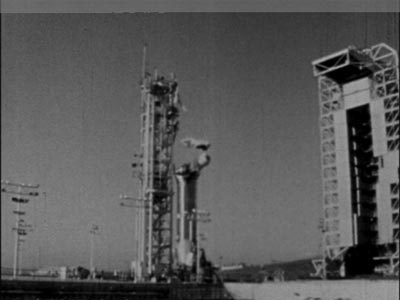 |
Exactly when this incident occurred, and how, remained unknown for many years. In 1989 Vandenberg Air Force Base’s public affairs office released a videotape showing the collapse. Later, in 2000, the DVD documentary Nukes in Space (which despite its name devotes a lot of attention to the early development of the U.S. military space program) also included the footage, which it mislabeled as a Thor rocket failure. The footage is amusing to watch precisely because it’s a case of a rocket literally breaking in half on the pad rather than blowing up in flight. But it was not until 2004 that rocket historian Joel Powell figured out what event the footage showed. Powell found a list of five Atlas D rockets that had never flown, and learned that four of these were rockets that were either canceled before or during construction, or were salvaged after completion. That left one vehicle which was listed as being involved in an “explosion” at Vandenberg.
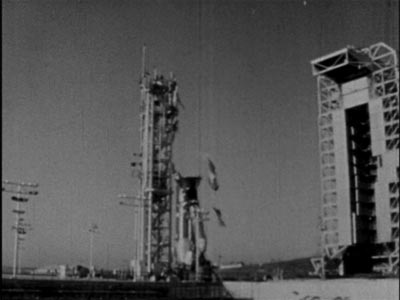 |
Powell later learned the details of the incident, and also looked at a list of Agena upper stages built by Lockheed. There were no missing numbers in the Agena list, leading him to conclude that the vehicle on top of the Atlas that day was probably either a dummy stage or a facilities verification version of the vehicle, not an actual flight vehicle.
| Sometimes rockets go out not with a bang, but a whimper. On rare occasions they fail in unspectacular ways, never even getting off the pad. |
The May 1963 date was shortly before the debut flight of a new class of high-resolution reconnaissance satellites known as the KH-7 GAMBIT. The GAMBIT had a powerful camera capable of returning images of objects on the ground roughly 0.6 meters across, or roughly the same resolution provided by commercial imagery satellites today, the same kind of satellites producing imagery used on Google Earth. The first GAMBIT launch occurred on July 12, 1963. It therefore makes perfect sense that the Agena that fell over on its pad in May was not the final version—the flight-qualified Agena would have been undergoing integration and checkout tests, either at Vandenberg or at another facility. GAMBIT’s camera was built by Eastman Kodak, its Orbital Control Vehicle by General Electric, and the Agena by Lockheed, but where all the pieces came together is still classified. They may have still been spread all over the country, nowhere near the pad. Or maybe they were only a few kilometers away, ready to fly, when their ride into space fell apart. We don’t know.
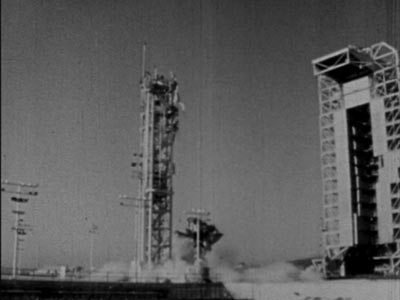 |
The Atlas was a write-off, as was the Agena. Fortunately for those involved there was no camera or flight qualified spacecraft smashed into little pieces. Also fortunately there was no fire, and damage to the launch pad was relatively minimal. The pad was fixed, another Atlas was assigned to the mission, and a few months later the high-resolution spysat debuted.
This was not the first time that plans for the debut of a new top secret spy satellite literally fell apart on the launch pad. That had happened four years earlier, and it was an important lesson for the people who built and launched those eyes in the sky.
Dwayne Day can be reached at zirconic1@cox.net.
|
|
